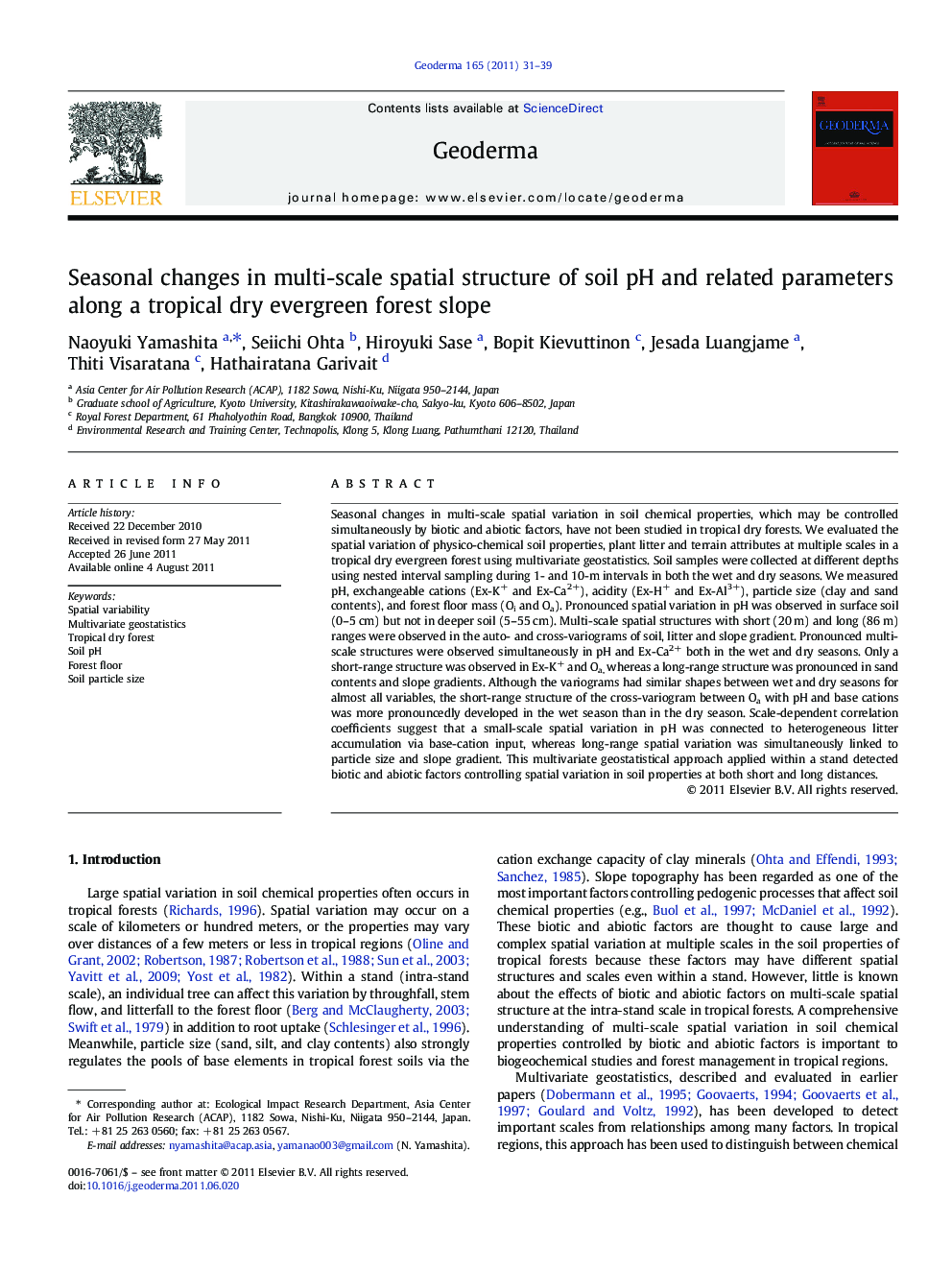| Article ID | Journal | Published Year | Pages | File Type |
|---|---|---|---|---|
| 4574095 | Geoderma | 2011 | 9 Pages |
Seasonal changes in multi-scale spatial variation in soil chemical properties, which may be controlled simultaneously by biotic and abiotic factors, have not been studied in tropical dry forests. We evaluated the spatial variation of physico-chemical soil properties, plant litter and terrain attributes at multiple scales in a tropical dry evergreen forest using multivariate geostatistics. Soil samples were collected at different depths using nested interval sampling during 1- and 10-m intervals in both the wet and dry seasons. We measured pH, exchangeable cations (Ex-K+ and Ex-Ca2+), acidity (Ex-H+ and Ex-Al3+), particle size (clay and sand contents), and forest floor mass (Oi and Oa). Pronounced spatial variation in pH was observed in surface soil (0–5 cm) but not in deeper soil (5–55 cm). Multi-scale spatial structures with short (20 m) and long (86 m) ranges were observed in the auto- and cross-variograms of soil, litter and slope gradient. Pronounced multi-scale structures were observed simultaneously in pH and Ex-Ca2+ both in the wet and dry seasons. Only a short-range structure was observed in Ex-K+ and Oa, whereas a long-range structure was pronounced in sand contents and slope gradients. Although the variograms had similar shapes between wet and dry seasons for almost all variables, the short-range structure of the cross-variogram between Oa with pH and base cations was more pronouncedly developed in the wet season than in the dry season. Scale-dependent correlation coefficients suggest that a small-scale spatial variation in pH was connected to heterogeneous litter accumulation via base-cation input, whereas long-range spatial variation was simultaneously linked to particle size and slope gradient. This multivariate geostatistical approach applied within a stand detected biotic and abiotic factors controlling spatial variation in soil properties at both short and long distances.
► Multivariate geostatistics are conducted in soil properties of tropical dry forest. ► 20 m and 86 m ranges are detected in semivariogram of soil pH in wet and dry seasons. ► Scale-dependent correlations reveal factors controlling pH at each scale and season. ► Forest floor mass controls soil pH at 20 m range in wet season. ► Sand contents and topography affect soil pH at 86 m range in both seasons.
